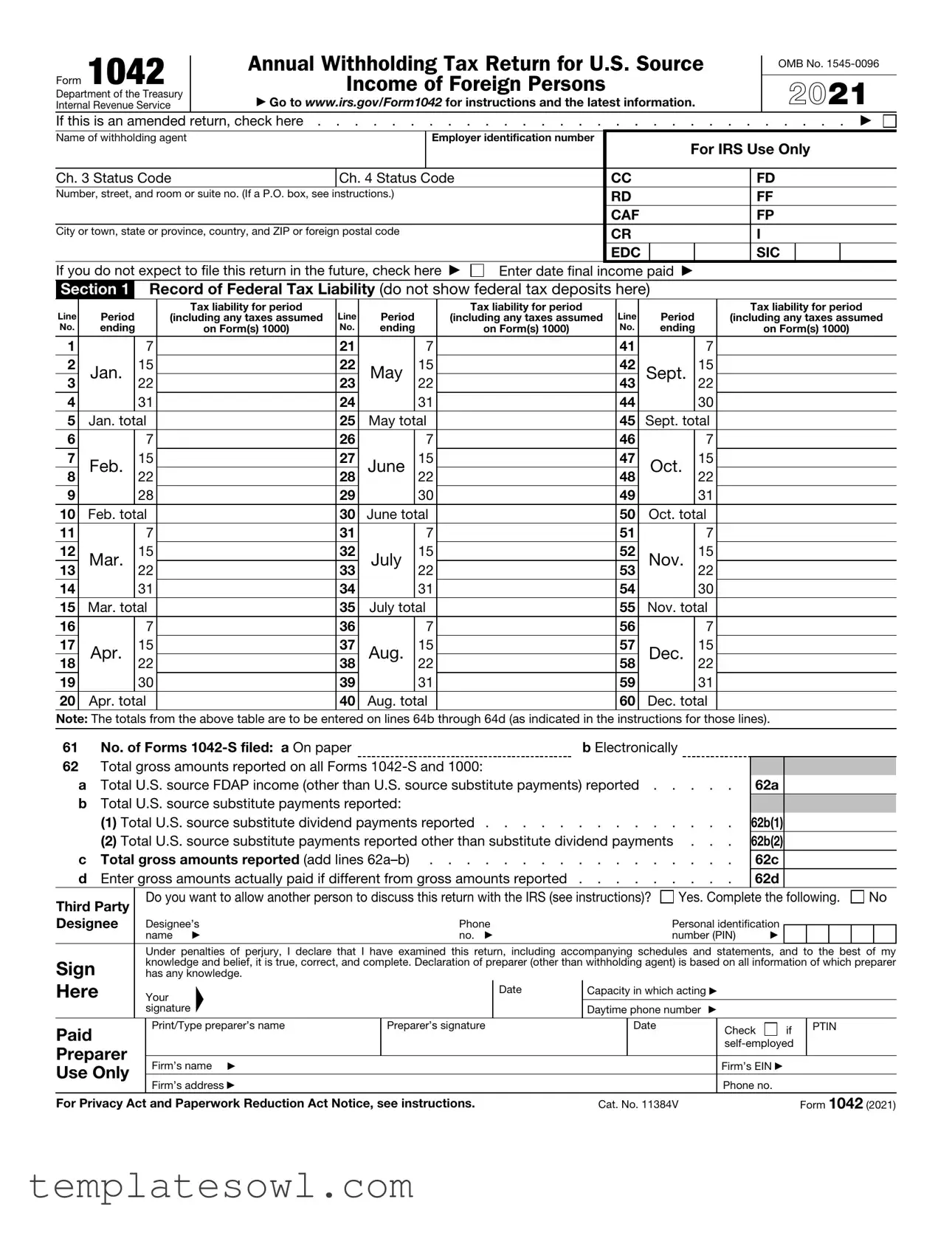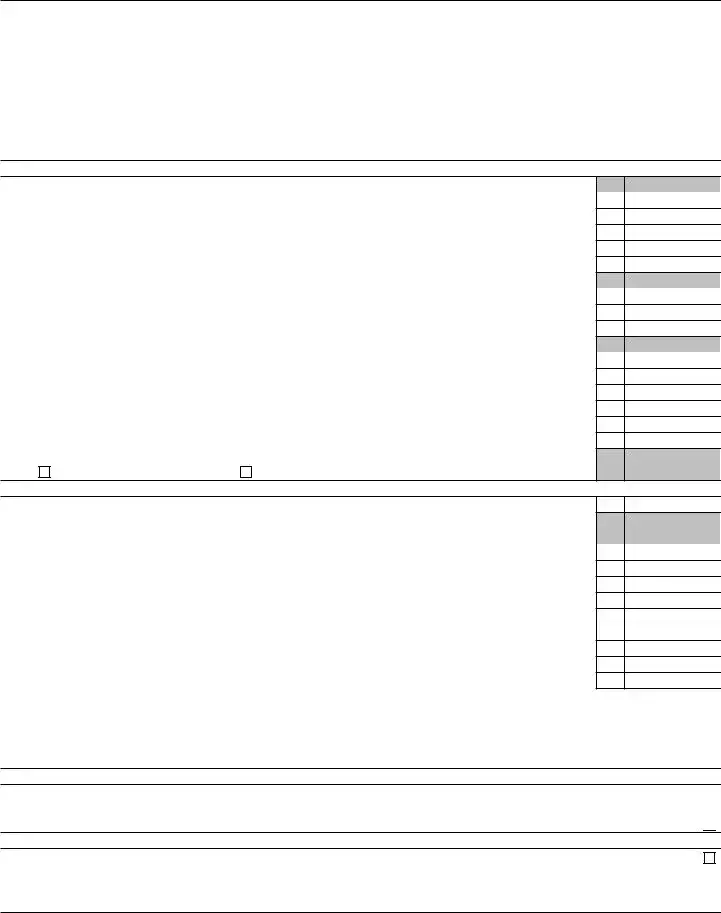The 1042 Form, formally known as the Annual Withholding Tax Return for U.S. Source Income of Foreign Persons, plays a crucial role in the tax obligations of U.S. entities making payments to foreign individuals or entities. This form is mainly utilized by withholding agents—those responsible for ensuring that the appropriate amount of federal income tax is withheld from specific payments made to foreign persons. A significant aspect of the 1042 Form is its purpose to report U.S. source fixed, determinable, annual, or periodic (FDAP) income. This includes, but is not limited to, dividends, interest, rents, and royalties. The form requires detailed information, such as the withholding agent's name and employer identification number, along with a review of tax liabilities over specific periods throughout the year. In addition, it tracks the total amounts reported on related Forms 1042-S, which detail the income payments made. It’s essential for withholding agents to accurately complete this form, as it assists the IRS in tracking tax withheld or tax owed, ensuring compliance with U.S. tax laws. Other noteworthy features include the ability for an agent to file an amended return and to designate a third party who is permitted to discuss the return with the IRS. Ultimately, the completion and submission of the 1042 Form are vital for both compliance and for accurately reflecting the tax responsibilities associated with payments to foreign entities.




